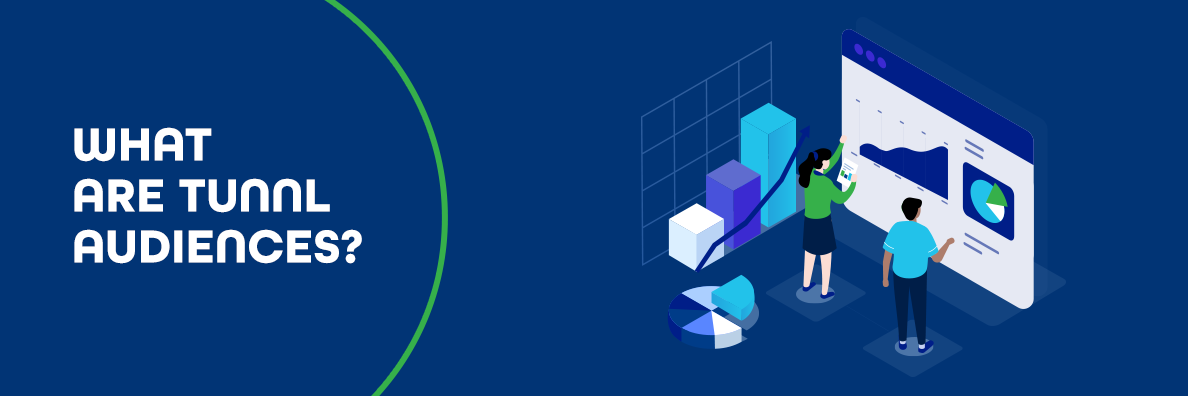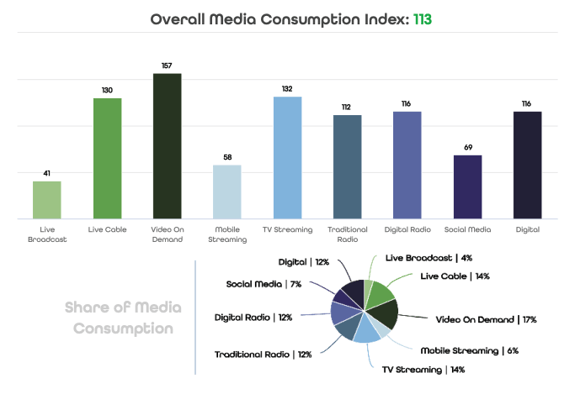What Are Tunnl Audiences? How to Target Specific People for Maximum Impact

Amanda joined Tunnl in April 2022 and currently serves as the VP, Audiences & Analytics.
Advertising is evolving. No longer can a brand or campaign find success through generalized, one-size-fits-all marketing tactics. Instead, consumers respond overwhelmingly to messages that speak directly to their specific values and needs.
If your message does not align with them, they quickly move on.
This is why it is critical to pay attention to the specific groups of people you engage with your advertising. Because if you’re trying to market to individuals who do not align with your product, service, or cause, then you’re ultimately wasting your time and resources.
That’s where audiences come in.
Tunnl has compiled 20 years’ worth of unique insights to help you understand who your target consumers are and what’s important to them at a core level. With the help of audiences, you can easily cut through the noise and reach the exact people most likely to engage with your brand.
Here, we’ll explore what audiences are and how you can leverage this data to connect with the right people, at the right time, with the right message to maximize engagement across the board.
What is an Audience?
Simply put, an audience is a data-driven list of people grouped together by how receptive they are to a particular message, issue, or cause. Everyone in an audience shares a similar stance, sentiment, or lifestyle, eliminating the guesswork that's typically inherent to audience targeting.
“Imagine that you can easily wade through the clutter and laser-focus your message to the people who are most likely to buy and engage with what you’re offering,” says Marco Orellana, Vice President of Sales at Tunnl. “That’s precisely what audiences offer.”
Though audiences can be built solely around demographic information like where people live or how much money they make, the most effective targeting factors in how people feel about the critical issues central to your campaign. Categorizing individuals to such a granular extent offers unique insights into who your ideal buyers or supporters are, what is important to them, and what they want — which allows you to create highly targeted messages in the channels they are most likely to see them.
And doing that starts with gathering audience data.
What is Audience Data and How Do I Gather It?
Accurate audiences need accurate audience data. Who people are, how they feel about hot-button issues, how they self-identify - it all adds up to the audiences they're included in. So, how do you gather data about your audience?
Tunnl builds these groups by analyzing billions of data points across demographics, shopping behavior, media consumption patterns, interests, opinions, political leanings, and more. Typically, this data is collected through surveys and then modeled to create usable audiences for advertisers. The finished product - an actionable audience you can use in your campaigns right away - will be one of our hundreds of prebuilt audiences, a premium prebuilt audience like the U.S. Policy Opinion Makers, or a custom audience made uniquely for one of our clients.
Because Tunnl draws on over 20 years of audience data and refreshes our audiences regularly, the audiences we build offer the most reliable, up-to-date insights available.
“Our always-on data collection engine is responsive to what's going on in our society,” explains Brent Seaborn, Tunnl's Chief Data Science Officer. “We're able to pool all of that data together to build out audiences, even on a new issue.”
What's Included in Third-Party Audience Data from Tunnl?
Tunnl audiences are built to be activated, so you can identify a relevant issue and quickly begin advertising against that anonymized audience in your ad platform of choice. But you can also spend some time analyzing your audience to better inform your campaigns, including which platforms will give you the best reach efficiency.
Media consumption patterns, including social media and streaming patterns, are included in any Tunnl audience along with:
- Audience count
- Geography
- Age
- Income
- Race
- Political party
- Sex
- Education
- Marital status
- Children in household
Consider Tunnl’s prebuilt Online Activists audience. This is a group of individuals who spend a lot of time on digital or social media, and who are likely to sign an online petition or contact their legislator. When you access this audience, you'll learn a lot about them:
- Their top media consumption is in video on-demand, digital radio, and TV streaming
- They're not huge fans of live broadcast TV, compared to the national average
- The political-party preference of this group leans Democrat (50%)

With the information provided, you can glean how best to reach this audience and tailor your content to align with their particular needs and interests. You'll see which mediums and platforms earn the most favor with your audience and thus promise the best reach efficiency for your campaign.
Why Does Audience Data Matter?
The most successful brands and campaigns use audience data because they want their message to be seen by people who are most likely to respond positively. Understanding your target audience and leveraging their data helps you get more engagement, page views, and traffic. You spend your ad budget in the right places at the right times toward the right people, and your ROAS improves.
Audiences help optimize strategy, save money on wasted impressions, and reach a larger number of potential customers or constituents.
Using audience data helps companies and campaigns create smarter marketing strategies with better results. When you know what your users want, you can deliver it without fail.


